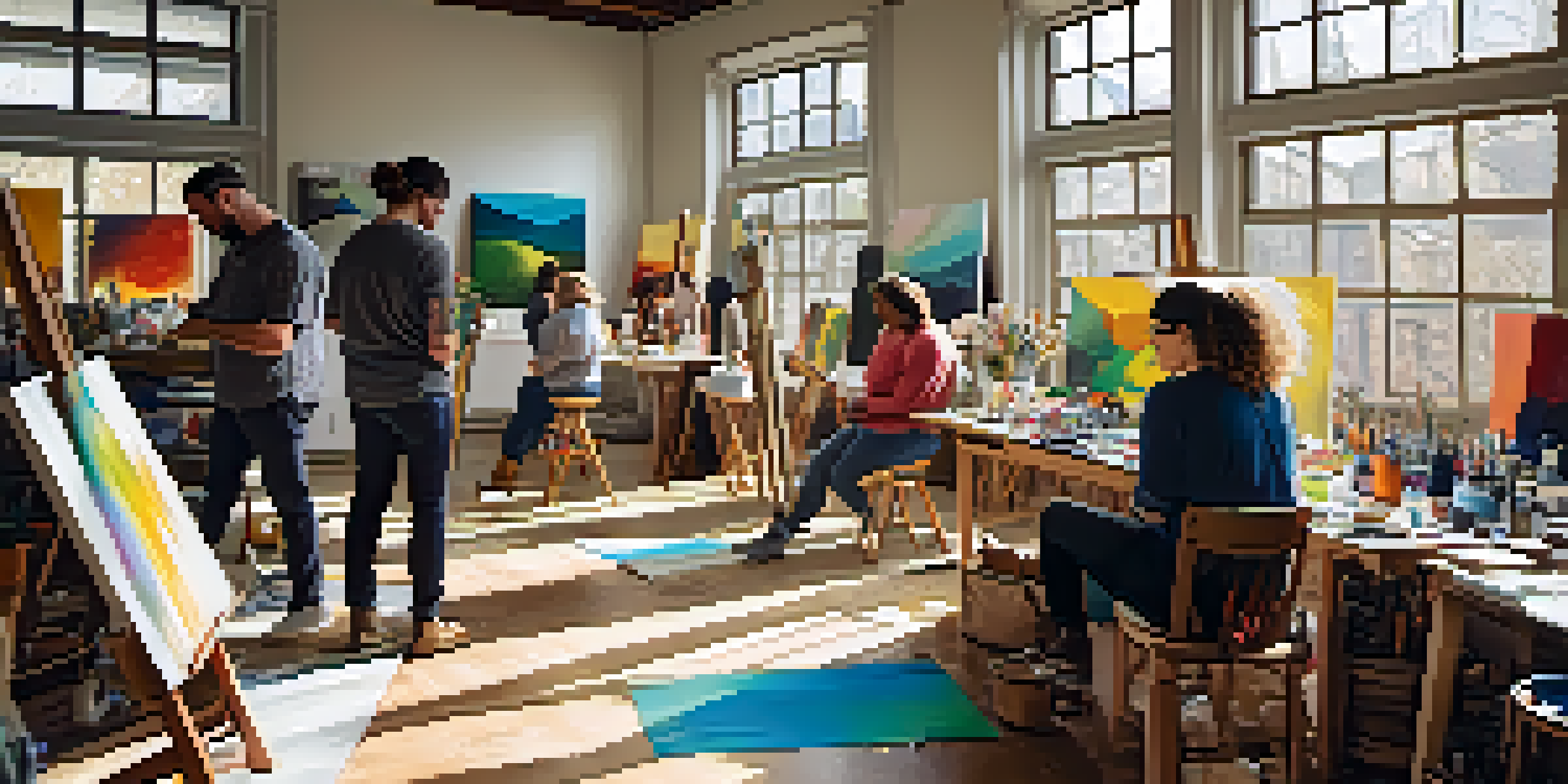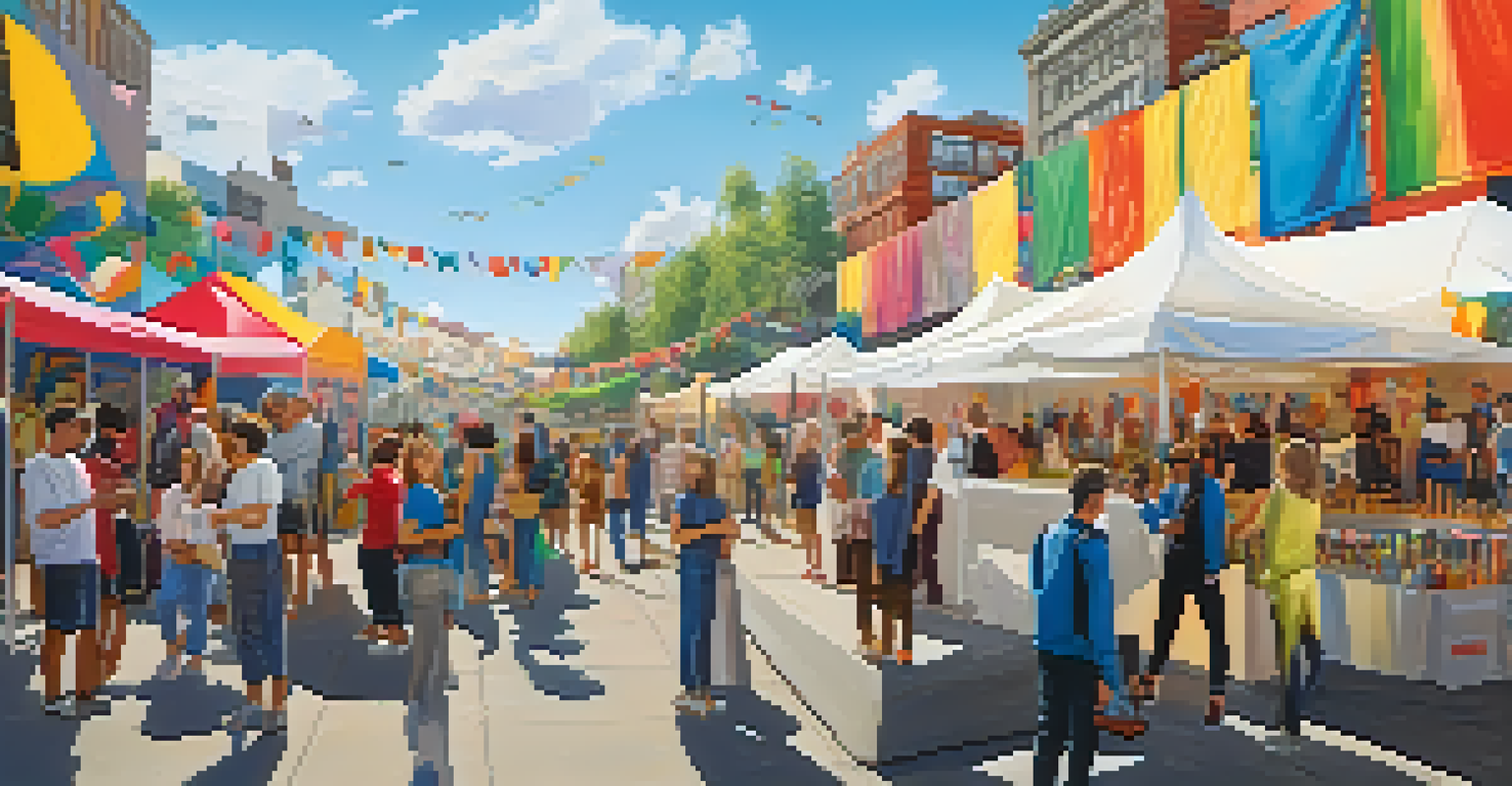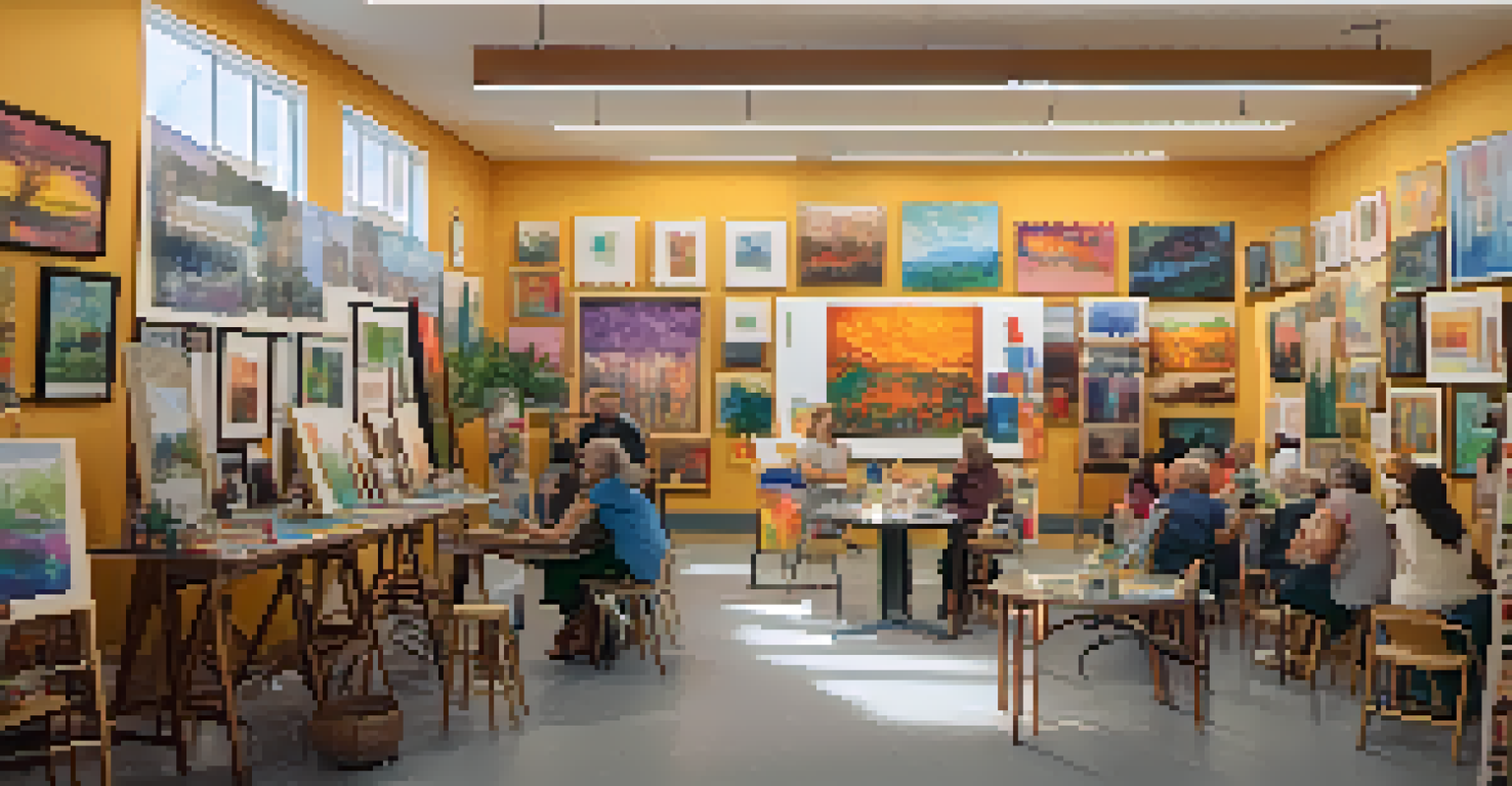The Role of Art Collectives in Shaping Market Dynamics

Understanding Art Collectives and Their Purpose
Art collectives are groups of artists who come together to collaborate, share resources, and support each other's work. They often operate outside the traditional gallery system, allowing for more experimental and innovative projects. By pooling their talents and resources, these collectives can amplify their voices and reach wider audiences.
Art is not freedom from discipline, but disciplined freedom.
One of the main purposes of art collectives is to foster community and create a sense of belonging among artists. This collaborative spirit can lead to the development of unique artistic styles and movements, which can then influence the broader art market. Collectives often create exhibitions, workshops, and events that engage the public and promote their members' work.
In essence, art collectives serve as incubators for creativity, where artists can explore new ideas without the constraints of commercial pressures. This freedom can lead to groundbreaking art that challenges existing norms, ultimately shaping market dynamics as collectors and institutions take notice.
The Impact of Collective Bargaining on Pricing Strategies
Art collectives often engage in collective bargaining, which can significantly affect pricing strategies in the art market. By negotiating as a group, they can create more favorable terms for their members, making art more accessible to both artists and buyers. This collective approach can also lead to more equitable pricing, reducing the disparity often seen in the art world.

For instance, when a collective organizes a group exhibition, they can set prices that reflect the group's collective value rather than relying on individual artists' reputations. This can encourage buyers to invest in emerging artists who may not yet have established a strong market presence. As a result, art collectives can help democratize the art market by promoting diverse voices and talents.
Art Collectives Foster Community
Art collectives create a sense of belonging among artists, enabling collaboration and the development of unique artistic styles.
Moreover, the collaborative nature of pricing can lead to more transparency in the market. Buyers are more informed about how prices are set, leading to a more engaged and educated audience. This shift in dynamics can ultimately reshape how art is bought and sold in the marketplace.
Creating Alternative Spaces for Art and Culture
Art collectives often establish alternative spaces where artists can showcase their work outside traditional galleries. These spaces can range from pop-up exhibitions to community centers, providing platforms for underrepresented artists to gain visibility. By creating these alternative venues, collectives challenge the status quo and offer fresh perspectives on contemporary art.
Creativity takes courage.
These alternative spaces also foster community engagement, inviting local residents to participate in the art-making process. Workshops, discussions, and performances can bring people together, strengthening the bond between artists and the community. This interaction not only enriches the cultural landscape but also helps to cultivate new audiences for the artists involved.
Ultimately, these alternative spaces play a crucial role in shaping market dynamics by redefining what is considered valuable in the art world. By highlighting diverse voices and innovative practices, art collectives can influence trends and inspire collectors to seek out works that may not fit the traditional mold.
The Role of Social Media in Collective Visibility
In today's digital age, social media has become a powerful tool for art collectives to enhance their visibility. Platforms like Instagram and Facebook allow collectives to showcase their members' work, share upcoming events, and connect with potential buyers on a global scale. This increased exposure can lead to new opportunities and collaborations that might not have been possible otherwise.
Social media also enables collectives to cultivate a dedicated following, allowing them to build a community around their brand. Engaging with followers through posts and stories can create a sense of intimacy and connection, encouraging support for their projects. This direct engagement can help demystify the art world and make it more accessible to newcomers.
Collective Bargaining Benefits Pricing
By negotiating as a group, art collectives can establish equitable pricing, making art more accessible to both artists and buyers.
As more collectors turn to social media to discover new artists, the influence of collectives in shaping market dynamics continues to grow. By leveraging these platforms effectively, art collectives can establish themselves as key players in the contemporary art scene.
Promoting Collaboration and Cross-Pollination of Ideas
Art collectives thrive on collaboration, often leading to the cross-pollination of ideas among artists. This exchange of concepts and techniques can spark innovative projects that push the boundaries of traditional art forms. When artists from diverse backgrounds come together, they can create work that reflects a richer tapestry of experiences and perspectives.
For example, a collective might host collaborative workshops where artists experiment with different mediums and styles. This hands-on approach not only fosters creativity but also encourages artists to step outside their comfort zones. The resulting work can capture the attention of collectors who are looking for something fresh and unique.
As these collaborations gain recognition, they can significantly influence market trends by introducing new genres or movements. Collectives that prioritize collaboration can set the stage for the next wave of artistic innovation, shaping the market in ways that benefit both artists and collectors.
Navigating the Challenges of the Art Market
While art collectives offer numerous advantages, they also face challenges in navigating the competitive art market. Limited funding and resources can hinder their ability to sustain projects and promote their members effectively. Additionally, the pressure to conform to market trends may stifle the very creativity that collectives aim to nurture.
To overcome these challenges, many collectives adopt innovative funding strategies, such as crowdfunding or grants, to support their initiatives. By diversifying their income streams, they can maintain their creative freedom and continue to produce impactful work. This resilience can serve as an inspiration for emerging artists looking to establish their own practices.
Social Media Boosts Collective Visibility
Art collectives utilize social media platforms to enhance visibility, engage with audiences, and connect with potential buyers globally.
Moreover, art collectives often emphasize the importance of community support and collaboration. By building strong relationships with local businesses and organizations, they can create a network that helps sustain their initiatives. This collaborative spirit not only strengthens the collective but also contributes to a more vibrant and diverse art market.
The Future of Art Collectives in Market Dynamics
As the art world continues to evolve, the role of art collectives in shaping market dynamics is becoming increasingly significant. With their focus on collaboration and community engagement, collectives offer a refreshing alternative to traditional art practices. This shift could lead to a more inclusive and diverse art market that values innovation and creativity.
Looking ahead, art collectives may increasingly leverage technology to expand their reach and impact. Virtual exhibitions, online sales platforms, and digital collaborations could open new avenues for artists to connect with global audiences. This evolution will likely reshape how art is perceived, bought, and sold in the future.

Ultimately, the future of art collectives is bright, as they continue to challenge norms and push boundaries. By championing diverse voices and fostering collaboration, they will play a crucial role in defining the future landscape of the art market.